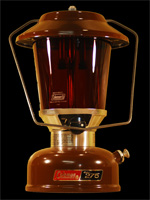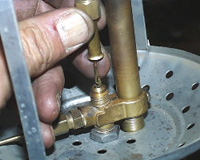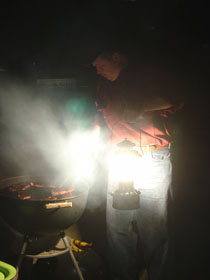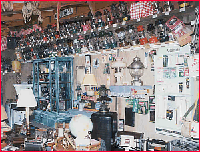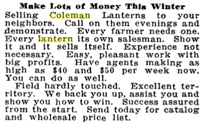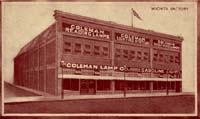 How to Buy an Old Coleman® Lantern or Stove
How to Buy an Old Coleman® Lantern or Stove
Here is the good news: you can score an old Coleman® lantern or stove for next-to-nothing. Plus, many of the parts are still available and they can almost always be brought back to life.
However. There are a few things I recommend you look for when shopping for an old appliance. A $5 lantern can quickly turn into a $50 lantern and a stove can be even worse. Look at the prices of basic the parts:
200A Lantern |
413E Stove |
|||
| Generator | $10.00 |
Generator | $20.00 |
|
| Check Valve | $12.00 |
Check Valve | $12.00 |
|
| Pump Cup | $6.00 |
Pump Cup | $6.00 |
|
| Fuel Filler Cap | $7.00 |
Fuel Filler Cap | $7.00 |
|
| Total | $35.00 |
Total | $45.00 |
It's a good practice to replace the generator on an old lantern, but often times you can get away with cleaning a stove generator. A check valve can sometimes be cleaned, but it can be a monumental chore to do so. Just understand that you may need to put a little time and money into your swap meet find to get it running correctly.
Here are a few things to look at (and for) when trying to decide if it's worth the time and money:
Do a good visual. What is missing, cracked, broken or bent? If something just doesn’t look right, figure out why. I had a gentleman email me once asking if I sold stove grates because he had bought a nice old stove at a thrift shop and didn’t notice that they were missing. Seems silly but when you’re excited about “the find” you can miss the obvious.
Perform a smell test. Attempt to open the fuel filler cap and smell it. If you can’t turn the fuel filler cap, pull the pump handle back and sniff there. If you smell a strong and very unpleasant order, that is varnish and it means that fuel has been in the appliance for a very long time.
Varnish clogs passages and will freeze internal parts. The stronger the smell, the more likely that you will need to tear it down and clean the internals.
Black is bad. If you see a black substance (hard or gooey) on the lantern fount or stove tank, that is never good. It means it was left pressurized years ago, and it developed a leak. The black is varnish, and seeing it is a guarantee that the internals are the same way. Know that you will need to rebuild it if you decide to buy it.
Turn everything. When you are inspecting an appliance, turn every knob and lever you can find to make sure nothing has seized up. “Everything” generally means the fuel valve wheel, the tip cleaner stem/lighting lever and the pump.
If you find something frozen, investigate it further. It may only be a light coat of varnish sticking two parts together, but it could mean a damaged part.
Inspect the fount/tank closely. Look for discolored spotting or signs of moisture that should not be there. Very old founts can crack, and you can see this if you look very closely. Old lanterns and lamps by other manufacturers are famous for this. Look for bubbling under the paint or plating as it often means advanced rust. Stove tanks sometimes leak around the seam.
 NEVER attempt to repair a cracked or rusted-out fount or tank. It doesn't matter how rare it is or how clever you think you are with solder or POR-15. A leaking gas tank under pressure is dangerous to everyone around you, and to anyone who might come along after you not knowing the integrity of the fount has been compromised.
NEVER attempt to repair a cracked or rusted-out fount or tank. It doesn't matter how rare it is or how clever you think you are with solder or POR-15. A leaking gas tank under pressure is dangerous to everyone around you, and to anyone who might come along after you not knowing the integrity of the fount has been compromised.
Test the pump. Play around with the pump to see how well it works. This includes loosening the fuel filler cap to listen for air passing into the fount. If the pump does not work, you won't be able to test the check valve or the air passage into the fount. It's not always possible to tell exactly what is wrong; sometimes you have to roll the dice…
If you pay attention to the varnish issue, 9 times out of 10 you'll be fine buying a vintage stove or lantern. Good luck!
Did you find this information useful? Click here to support the Old Town Coleman Center with a cup of coffee!


